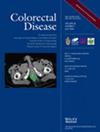Endometriosis and its role in pouch patients: A matched-pair analysis
Abstract
Introduction
Patients requiring ileoanal pouch (IPAA) are often women of reproductive age. Outcomes in pouch patients with endometriosis have not been described. This study aimed to assess the association of endometriosis on pelvic pouch function, quality of life and pouch survival.
Materials and Methods
Patients who underwent IPAA between 1985 and 2022 with endometriosis were retrospectively reviewed and matched in a 1:3 ratio based on gender, diagnosis, pouch type, age at pouch creation, BMI and ASA score.
Results
Twenty-two patients with endometriosis and IPAA were matched with 66 patients without endometriosis, with ulcerative colitis being the most common diagnosis in both groups (86%). Histopathological verification of endometriosis was available in 45.5% of cases. Intraoperative variables and surgery-related postoperative complications were similar between groups, except for a higher incidence of thromboembolism in the endometriosis group (18% vs. 3%, p = 0.04). There was no significant difference in pouchitis (73% vs. 46%, p = 0.06), while pouch dysfunction occurred significantly more frequently in endometriosis patients (18% vs. 3%, p = 0.03; OR 7.11, 1.53–33.10, p = 0.01). Hysterectomy, with or without salpingo-oophorectomy, was performed in 45% of endometriosis patients, primarily due to endometriosis and pain and most commonly (90%) following IPAA. The timing of endometriosis diagnosis (before or after IPAA) did not significantly influence perioperative outcomes. Overall quality of life was favourable in both groups (0.7 vs. 0.8, p = 0.35).
Conclusion
Pouch function was inferior in endometriosis patients, yet with a comparable overall quality of life. The timing of endometriosis did not appear to be a significant factor. Endometriosis should not be considered a contraindication for IPAA. A multidisciplinary approach addressing pain management, infertility treatment and potential hysterectomy should be considered early in patient care.

 求助内容:
求助内容: 应助结果提醒方式:
应助结果提醒方式:


